6441 books for « bruno c j de »Edit
-
Type
Any type (1)
Book (6552)
Drawings (1)
Magazine (6)
Music sheets (149)
New book (2)
Object book (1)
Old papers (2)
Photographs (2)
Posters (1)
-
Latest
Last 24h (4)
Last month (325)
Last week (8)
-
Language
Dutch (7)
English (5)
French (6662)
German (10)
Italian (11)
Russian (22)
-
Century
16th (1)
17th (1)
18th (9)
19th (60)
20th (2804)
21st (1549)
-
Countries
Belgium (364)
Brazil (1)
Canada (35)
Côte d'Ivoire (4)
Denmark (9)
France (5657)
Germany (4)
Greece (1)
Italy (54)
Netherlands (2)
Switzerland (555)
United Kingdom (9)
United States of America (22)
-
Syndicate
ALAC (31)
CLAM (23)
CLAQ (8)
CNE (1)
ILAB (2734)
NVVA (79)
SLACES (79)
SLAM (2494)
SNCAO (5)
Topics
- 1900 (20)
- Alsace (20)
- Archaeology (30)
- Architecture (104)
- Autographs (17)
- Barber (24)
- Belgium (26)
- Biography (55)
- Brazil (32)
- Bruno g. (47)
- Children’s books (112)
- Christianity (35)
- Christmas (22)
- Cinema (29)
- Collections (18)
- Comic strip (119)
- Cooking (53)
- Culinary art (23)
- Dauphiné (23)
- Dedication (46)
- Detective novels (40)
- Drawings (26)
- Economics (65)
- Education (112)
- Education - morals (62)
- English (46)
- Ethic (24)
- Fashion (23)
- Fine arts (81)
- First edition (54)
- Fischer bruno (36)
- Fox (27)
- Gay lussac (68)
- Geography (44)
- Germanic languages (51)
- Gibert (33)
- Greece (20)
- Guide books (45)
- Helvética (46)
- History (278)
- Humour anecdotes (22)
- Industrial arts & crafts - fine arts (28)
- Iron (23)
- Islam muslim (17)
- Italian (29)
- Italy (48)
- Journalism (36)
- Law (40)
- Linnean society of lyons (34)
- Literature (710)
- Lyons and area (34)
- Lyons college (34)
- Lyons college pc (34)
- Lyons revue (34)
- Magazine (77)
- Masure bruno (57)
- Medicine (60)
- Music (25)
- Navy (20)
- Newspapers press (115)
- Painters (20)
- Painting (44)
- Paris (36)
- Philosophy (118)
- Photography (118)
- Poetry (80)
- Policy (96)
- Professions guilds (25)
- Psychiatry neurology (29)
- Psychoanalysis (50)
- Psychology (115)
- Racine jean (19)
- Reading vocabulary (50)
- Regionalism (58)
- Religions (116)
- Review (53)
- Reviews (89)
- Sciences (37)
- Scores (167)
- Sculpture (35)
- Social sciences (21)
- Sociology (44)
- Songs (131)
- Sports (19)
- Switzerland (40)
- Tea (28)
- Teaching (23)
- Testimonies / stories (21)
- Theatre (26)
- Theology (39)
- Travel (28)
- Various (73)
- Vintage (17)
- Viticulture (18)
- War (48)
- Weil simone (26)
- Wine (21)
- Youth (39)
Frédéric Chauvaud Bruno Jannin Jacqueline Kermarec Joël Michelin Frédéric Chauvaud Bruno Jannin Jacqueline Kermarec Joël Michelin
Reference : 143198
(1998)
ISBN : 2216032654
Histoire - Géographie Terminale BEP tertiaires et Industrie (Ouvrage)
Foucher 1998 127 pages in8. 1998. Broché. 127 pages.
Très Bon Etat
Ecriture, dessins.
Fontaine 1947 Fontaine, Paris, 1947, exemplaire numéroté 10/221, broché, environ 20x14cm, couverture insolée, bon état pour le reste.
Bruno Capacci a été membre des "Italiens de Paris" avec Chirico, Severini, Fini,... Il a été proche des surréalistes et mari de Suzanne Van Damme. Merci de nous contacter à l'avance si vous souhaitez consulter une référence au sein de notre librairie.
[HAUTERIVE, Pierre-Louis-Auguste-Bruno Blanc de La Nautte, Comte d'.]
Reference : 102384
Elemens (Eléments) d'Economie Politique, suivis de Quelques Vues sur l'Application des Principes de cette Science aux Règles administratives.
A Paris, chez Fantin, Libraire, 1817, 1 volume in-8 de 205x128 mm environ, 4 ff. (faux-titre, titre, table), xxj-384 pages, pleine basane racinée brune, dos lisse portant titres dorés sur pièce de titre rouge, orné de motifs dorés, plats encadrés d'une guirlande dorée, coupes dorées, gardes et tranches. jaspées. Coins mors et coiffes frottés, dos décoloré, légères rousseurs, sinon bon état. Première Edition.
Pierre-Louis-Auguste-Bruno Blanc de La Nautte, comte d'Hauterive (7 mars 1797, Gap - 14 décembre 1870, Pau), est un homme politique français. Conseiller d'Etat de Napoléon. Merci de nous contacter à l'avance si vous souhaitez consulter une référence au sein de notre librairie.
Histoire de la République de Venise Par P. DARU (7 volumes).
A Paris, chez Firmin Didot, Imprimeur du Roi, 1819, complet en 7 volumes in-8 de 210x130 mm environ, 640, 560, 710, 678, 684, vij-720, 671 pages, demi reliure veau bistre, dos à nerfs portant titres et tomaisons dorés, sur pièces de titre rouge et tomaisons noires, gardes marbrées. Avec 8 planches dépliantes. Quelques erreurs de pagination, coiffes supérieures ébréchées avec début de fentes sur la plupart des volumes, galeries sur certains mors-peaux (tome 3), épidermures, petites rousseurs et pages brunies, déchirure restaurée sur une coiffe (tome 1), sinon bon état. Edition originale.
Pierre-Antoine-Noël-Mathieu Bruno Daru, né à Montpellier le 12 janvier 1767 et mort à Meulan au château de Bècheville le 5 septembre 1829, est un homme d'État et homme de lettres français. Comte d'Empire, il est l'homme dont Napoléon Ier à Sainte-Hélène résumait l'éloge en ces termes : « Il joint le travail du buf au courage du lion". Merci de nous contacter à l'avance si vous souhaitez consulter une référence au sein de notre librairie.
Bruno Bettelheim présente : les mille et une nuits, choix de contes.
Seghers, Coll. Bruno Bettelheim présente, 1978, 210 p., broché, bon état.
Traduction de l'introduction et choix des contes par Théo Carlier. Merci de nous contacter à l'avance si vous souhaitez consulter une référence au sein de notre librairie.
Ueber die Lehre des Spinoza in Briefen an den Herrn Moses Mendelssohn. Neue vermehrte Auflage. - [THE FIRST EVER TRANSLATION OF BRUNO'S ""DE UNO ET CAUSA""...]
Breslau, Gottl. Löwe, 1789, 8vo. Very beautiful contemporary red full calf binding with five raised bands and gilt green leather title-label to richly gilt spine. elaborate gilt borders to boards, inside which a ""frame"" made up of gilt dots, with giltcorner-ornamentations. Edges of boards gilt and inner gilt dentelles. All edges gilt. Minor light brownspotting. Marginal staining to the last leaves. Engraved frontispiece-portrait of Spinoza, engraved title-vignette (double-portrait, of Lessing and Mendelssohn), engraved end-vignette (portrait of Jacobi). Frontispiece, title-page, LI, (1, -errata), 440 pp. Magnificent copy.
First edition thus, being the seminal second edition, the ""neue vermehrte Auflage"" (new and expanded edition), which has the hugely important 180 pp. of ""Beylage"" for the first time, which include the first translation into any language of any part of Giordano Bruno's ""de Uno et Causa..."" (pp. 261-306) as well as several other pieces of great importance to the ""Pantheismusstreit"" and to the interpretation of the philosophy of Spinoza and Leibniz, here for the first time in print. The present translation of Bruno seems to be the earliest translation of any of Bruno's works into German, and one of the earliest translations of Bruno at all - as far as we can establish, the second, only preceded by an 18th century translation into English of ""Spaccio della bestia trionfante"". It is with the present edition of Jacobi's work that the interest in Bruno is founded and with which Bruno is properly introduced to the modern world. Jacobi not only provides what is supposedly the second earliest translation of any of Bruno's works ever to appear, he also establishes the great influence that Bruno had on two of our greatest thinkers, Spinoza and Leibnitz. It is now generally accepted that Spinoza founds his ethical thought upon Bruno and that Lebnitz has taken his concept of the ""Monads"" from him. It is Jacobi who, with the second edition of his ""Letters on Spinoza..."", for the first time ever puts Bruno where he belongs and establishes his position as one of the key figures of modern philosophy and thought. Bruno's works, the first editions of which are all of the utmost scarcity, were not reprinted in their time, and new editions of them did not begin appearing until the 19th century. For three centuries his works had been hidden away in libraries, where only few people had access to them. Thus, as important as his teachings were, thinkers of the ages to come were largely reliant on more or less reliable renderings and reproductions of his thoughts. As Jacobi states in the preface to the second edition of his ""Letters on Spinoza..."", ""There appears in this new edition, under the title of Appendices (""Beylage""), different essays, of which I will here first give an account. The first Appendix is an excerpt from the extremely rare book ""De la causa, principio, et Uno"", by Jordan Bruno. This strange man was born, one knows not in which year, in Nola, in the Kingdom of Naples"" and died on February 17th 1600 in Rome on the stake. With great diligence Brucker has been gathering information on him, but in spite of that has only been able to deliver fragments [not in translation]. For a long time his works were, partly neglected due to their obscurity, partly not respected due to the prejudice against the new opinions and thoughts expressed in them, and partly loathed and suppressed due to the dangerous teachings they could contain. On these grounds, the current scarcity of his works is easily understood. Brucker could only get to see the work ""De Minimo"", La Croce only had the book ""De Immenso et Innumerabilibus"" in front of him, or at least he only provides excerpts from this [also not in translation], as Heumann does only from the ""Physical Theorems"" [also small fragments, not in translation]"" also Bayle had, of Bruno's metaphysical works, himself also merely read this work, of which I here provide an excerpt."" (Vorrede, pp. (VII)-VIII - own translation from the German). Jacobi continues by stating that although everyone complains about the obscurity of Bruno's teachings and thoughts, some of the greatest thinkers, such as Gassendi, Descartes, ""and our own Leibnitz"" (p. IX) have taken important parts of their theorems and teachings from him. ""I will not discuss this further, and will merely state as to the great obscurity (""grossen Dunkelheit"") of which people accuse Bruno, that I have found this in neither his book ""de la Causa"" nor in ""De l'Infinito Universo et Mondi"", of which I will speak implicitly on another occasion. As to the first book, my readers will be able to judge for themselves from the sample (""Probe"") that I here present. My excerpt can have become a bit more comprehensible due to the fact that I have only presented the System of Bruno himself, the ""Philosophia Nolana"" which he himself calls it, in its continuity... My main purpose with this excerpt is, by uniting Bruno with Spinoza, at the same time to show and explain the ""Summa of Philosophy"" (""Summa der Philosophie"") of ""En kai Pan"" [in Greek characters - meaning ""One and All""]. ... It is very difficult to outline ""Pantheism"" in its broader sense more purely and more beautifully than Bruno has done."" (Vorrede pp. IX-XI - own translation from the German). So not only does Jacobi here provide this groundbreaking piece of Bruno's philosophy in the first translation ever, and not only does he provide one of the most important interpretations of Spinoza's philosophy and establishes the importance of Bruno to much of modern thought, he also presents Bruno as the primary exponent of ""pantheism"", thereby using Bruno to change the trajectory of modern thought and influencing all philosophy of the decades to come. After the second edition of Jacobi's ""Ueber die Lehre des Spinoza"", no self-respecting thinker could neglect the teachings of Bruno"" he could no longer be written off as having ""obscure"" and insignificant teachings, and one could no longer read Spinoza nor Leibnitz without thinking of Bruno. It is with this edition that the world rediscovers Bruno, never to forget him again.WITH THE FIRST EDITION OF ""UEBER DIE LEHRE DES SPINOZA"" (1785), JACOBI BEGINS THE FAMOUS ""PATHEISMUSSTREIT"", which focused attention on the apparent conflict between human freedom and any systematic, philosophical interpretation of reality. In 1780, Jacobi (1743-1819), famous for coining the term nihilism, advocating ""belief"" and ""revelation"" instead of speculative reason, thereby anticipating much of present-day literature, and for his critique of the Sturm-und-Drang-era, had a conversation with Lessing, in which Lessing stated that the only true philosophy was Spinozism. This led Jacobi to a protracted and serious study of Spinoza's works. After Lessing's death, in 1783 Jacobi began a lengthy letter-correspondende with Mendelssohn, a close friend of Lessing, on the philosophy of Spinoza. These letters, with commentaries by Jacobi, are what constitute the first edition of ""Ueber die lehre des Spinoza"", as well as the first part of the second edition. The second edition is of much greater importance, however, due to greatly influential Appendices. The work caused great furor and the enmity of the Enlightenment thinkers. Jacobi was ridiculed by his contemporaries for attempting to reintroduce into philosophy belief instead of reason, was seen as an enemy of reason and Enlightenment, as a pietist, and as a Jesuit. But the publication of the work not only caused great furor in wider philosophical circles, there was also a personal side to the scandal which has made it one of the most debated books of the period: ""Mendelssohn enjoyed, as noted at the outset, a lifelong friendship with G. E. Lessing... Along with Mendelssohn, Lessing embraced the idea of a purely rational religion and would endorse Mendelssohn's declaration: ""My religion recognizes no obligation to resolve doubt other than through rational means"" and it commands no mere faith in eternal truths"" (Gesammelte Schriften, Volume 3/2, p. 205). To pietists of the day, such declarations were scandalous subterfuges of an Enlightenment project of assimilating religion to natural reason... While Mendelssohn skillfully avoided that confrontation, he found himself reluctantly unable to remain silent when, after Lessing's death, F. H. Jacobi contended that Lessing embraced Spinoza's pantheism and thus exemplified the Enlightenment's supposedly inevitable descent into irreligion.Following private correspondence with Jacobi on the issue and an extended period when Jacobi (in personal straits at the time) did not respond to his objections, Mendelssohn attempted to set the record straight about Lessing's Spinozism in ""Morning Hours"". Learning of Mendelssohn's plans incensed Jacobi who expected to be consulted first and who accordingly responded by publishing, without Mendelssohn's consent, their correspondence - ""On the Teaching of Spinoza in Letters to Mr. Moses Mendelssohn"" - a month before the publication of ""Morning Hours"". Distressed on personal as well as intellectual levels by the controversy over his departed friend's pantheism, Mendelssohn countered with a hastily composed piece, ""To the Friends of Lessing: an Appendix to Mr. Jacobi's Correspondence on the Teaching of Spinoza"". According to legend, so anxious was Mendelssohn to get the manuscript to the publisher that, forgetting his overcoat on a bitterly cold New Year's eve, he delivered the manuscript on foot to the publisher. That night he came down with a cold from which he died four days later, prompting his friends to charge Jacobi with responsibility for Mendelssohn's death.The sensationalist character of the controversy should not obscure the substance and importance of Mendelssohn's debate with Jacobi. Jacobi had contended that Spinozism is the only consistent position for a metaphysics based upon reason alone and that the only solution to this metaphysics so detrimental to religion and morality is a leap of faith, that salto mortale that poor Lessing famously refused to make. Mendelssohn counters Jacobi's first contention by attempting to demonstrate the metaphysical inconsistency of Spinozism. He takes aim at Jacobi's second contention by demonstrating how the ""purified Spinozism"" or ""refined pantheism"" embraced by Lessing is, in the end, only nominally different from theism and thus a threat neither to religion nor to morality."" (SEP).The Beylagen, which are not included in the 1785 first edition and only appear with the 1789 second edition, include: I. Auszug aus Jordan Bruno von Nola. Von der Ursache, dem Princip und dem Einen (p. 261-306) II. Diokles an Diotime über den Atheismus (p. 307-327) translation of Lettre ... sur l'Athéisme by F. Hemsterhuis.
Opera ea quae ad adinventam ab ipso ertem universalem, Scientiarum Artiumque omnium breui compendio, firmaque memoria apprehendendarum, locupletissimaque vel oratione ex tempore pertractandarum, pertinent. Ut et In eandem quorumdam interpretum scripti... - [SPARKING LEIBNIZ' DREAM OF A UNIVERSAL ALGEBRA]
Argentinae (i.e Strassburg], Lazarus Zetzner, 1598. 8vo. Very nice 19th century half calf with richly gilt spine. Some browning and spotting, but overall a nice copy. Many woodcut diagrams in the text. Woodcut printer's device to title-page. (24), 992, (32) pp.
Scarce first edition of this seminal publication, which is practically solely responsible for the spreading of both Lullism and Bruno's mnemonic theories in the 17th century. This publication constitutes the standard work on Lull for more than a century and it directly influenced the most significant thinkers of the following century, e.g. Leibnitz, whose dream of a universal algebra was stimulated by the reading of Lull (and Bruno) in the present publication.""In 1598, while the philosopher from Nola (i.e. Bruno) was in prison in Rome, Johann Heinrich Alsted together with the printer Lazarus Zetzner in Strasburg, published a great collection of the works by Raymond Lull and the most significant commentaries on Lullism, among them also some treatises by Bruno. Since then, Bruno's mnemonics was a basic component of all attempts made in the seventeenth century to set up a universal science on the basis of a theory of combinations interpreted in terms of Neo-Platonism... It was also Leibniz who was one of the first to assume similarities between Bruno's theory of the infinite and the Cartesian theory of vortices in an undetermined and infinite universe"" Leibniz had had the opportunity to read these treatises in his capacity as librarian of the Herzog August Library in Wolfenbüttel"". (Blum, p. 110). ""From another of Pierce's Lists we know that he possessed an important collection of Lullian and Lullist texts, namely the Renaissance edition by the famous Strasbourg editor Lazarus Zetzner: ""Raymundi Lulli Opera ea quae ad adinventam ab ipso Artem universalem... pertinent"" (printed first in 1598, then 1609, 1617 and, by his heirs, in 1651). This edition, which was very influential - the young Leibniz, for instance, acquainted himself with Llull through this anthology-, contains several works by Llull himself as well as those Renaissance commentaries on his works by Agrippa of Netteshein, Giordano Bruno..."" (Fidora, p. 181).This highly influential publication of Lull's ""Opera"" through which Leibniz and many of his contemporaries got acquainted with Lull and Bruno, contains seven genuine works by Lull (including the two most important works of the last period of the Art, the ""Ars brevis"" and the ""Ars magna""), four works falsely attributed to Lull, Agrippa's ""In Artem Brevem"" - and Bruno's four highly important commentaries on Lull, being the ""De Lulliano specierum scrutinio"" (pp. 685-97), ""De Lampade combinatoria Lulliana"" (pp. 698-755), ""De Progressu Logicae venationis"" (pp. 756-62) and ""De Lampade venatoria logicurum"" (pp. 763-806), which constitute Bruno's most important logical treatises and his seminal writings on mnemonics. The four treatises originally appeared separately in 1587 and 1588 respectively, and all appear here for the second time (apart from the ""De progressu"", which also appeared together with the first printing of the ""De Lampade venatoria logicorum"" the following year and here thus appears for the third time). The first printings of these works are of impossible scarcity and hardly obtainable. These four groundbreaking works appear together for the first time in the present publication and it is through this second printing of them that 17th century thinkers such as Leibniz got acquainted with them. Raymond Lull (ca. 1232-1315) was one of the most important and influential philosophers and logicians of his time. He is considered a pioneer of several fields of science, now most notably computation theory. His works sparked Leibniz' interest in the field and drove him to his seminal invention. Lull invented an ""art of finding truth"" (often in Lullism referred to as ""The Art""), which centuries later, when read in the present publication, stimulated Leibnitz' dream of a universal algebra. Lull applied this art to basically all subjects studied at the Medieval Universities. ""Lull's metaphysics worked a revolution in the history of philosophy"" (The Cambridge History of Renaissance Philosophy, p. 548). Giordano Bruno (1548-1600) is one of the most significant thinkers of modern times. He prepared the way for the rise of modern philosophy and became a forerunner of modern philosophy and science. His logical commentaries and mnemonic treatises were of special importance to the emerging logic of the 17th century and it is his version of Lullism that comes to dominate this significant strand of thought for more than a century. Having been arrested in 1592 due to alleged heresy, Bruno was subjected to a 6 year long trial that finally condemned him to hanging in 1600, two years after the publication of the four works that came to secure his influence over the following century. ""Bruno burned for philosophy"" he was killed for moral, physical, and metaphysical views that terrified and angered authorities."" (Copenhaver & Schmitt, p. 315).""By far the greatest figure of this generation was Giordano Bruno (1548-1600), whose interest in Llull dates almost exclusively from his sojurns in France and Germany. His activities in this field, which he combined with his other aspects of Reniassance philosophy, are too complex to be treated in any detail here. Suffice it to say with Frances Yates that ""the three strands of the Hermetism, the mnemonics, the Lullism are all interwoven in Bruno's complex personality, mind and mission""...""Perhaps the most important event of Lulliasm of this period was not the appearance of any new figure or work but the publication of an anthology by Lazarus Zetzner of Strasburg, entitled ""Raymundi Lullii, opera ea quae ad adinventam ab ipso Artem universalem"", which, for the next century or so, was to become the standard work on Llull. It is therefore instructive in understanding seventeenth-century Lullism... The first edition of this anthology appeared in Strasburg in 1598. It was reprinted in 1609... reprinted in 1617 and again in 1651... This mixture of Llull, pseudo-Llull, and Renaissance commentaries, emphasizing a general art of discourse, constituted the ""package"" in which Llull was presented to seventeenth-century readers, including Leibniz (note 33: it was apparently the first edition of 1598 that Leibniz read), and it must be kept in mind when discussing their version of Llull."" (Bonner, pp. 67-68). Bruno's works, the first editions of which are all of the utmost scarcity, were generally not reprinted in Bruno's lifetime and new editions of them did not begin appearing until the 19th century. For three centuries his works had been hidden away in libraries, where only few people had access to them. One very significant exception is the four treatises that we find in the present publication. They are among the only of Bruno's treatises to be published again before the 19th century, and as they don't appear again on their own, but here, in THE most important publication of Lull's writings for more than a century, it is through this second printing of these four works that Bruno comes to have his primary influence upon 17th century philosophy and science. His separate publications were simply not accessible to thinkers like Leibniz and could thus not be studied. Also therefore, Zetzners' 1598 publication of Lull and Bruno together proved to be of seminal importance, not only to the spreading of Lullism, but just as much to the spreading of Bruno's even more important theories. ""Raymond Lull (ab. 1232 - 1315), Majorcan writer, philosopher, memorycian (he was later to become a great source of inspiration for Giordano Bruno), logician, and a Franciscan tertiary. He wrote the first major work of Catalan literature. Recently-surfaced manuscripts show him to have anticipated by several centuries prominent work on elections theory. He is sometimes considered a pioneer of computation theory, especially given his influence on Gottfried Leibniz. He is also well known also as a glossator of Roman Law. Lull taught himself Arabic with the help from a slave. As a result, he wrote his ""Ars Magna"", which was intended to show the necessary reasons for the Christian faith. To promote his theory and test its effectiveness, he went to Algiers and Tunis. At the age of 82, in 1314, Lull traveled again to North Africa, where an angry crowd of Muslims stoned him in the city of Bougie. Genoese merchants took him back to Mallorca, where he died at home in Palma the following year."". (Thorndyke)Giordano Bruno was born in Nola in Southern Italy in 1548, and entered the Dominican order in Naples at the age of 18. While pursuing theological studies, he also thoroughly studied the ancient philosophers and began doubting some of the teachings of the Catholic Church. When he was in Rome in 1576, these doubts became known to the authorities of his order, and an indictment for heresy was prepared against him. Before he could be arrested, he escaped and began a long journey which took him to many European countries, among these England, where his most important works are published, until in 1592 he was denounced to the Inquisition and arrested. In 1593 he was taken to Rome, imprisoned, and subjected to a 6 year long trial. He firmly refused to recant his philosophical opinions, and in 1600 he was condemned for heresy, sentenced to death, and burned alive.SALVESTRINI NR. 1.See:Anthony Bonner: Doctor Illuminatus. A Ramon Llull Reader, 1993.Paul Richard Blum: Giordano Bruno. An Introduction, 2012.The Cambridge History of Renaissance Philosophy.Alexander Fidora: Peirce's Account of the Categories and Ramon Llull.
Evadé de la vie, quatre thérapies d'enfants affectivement perturbés.
Fleurus 1975 Fleurus, 638p, 1975, in-8 broché. Bon état général.
Merci de nous contacter à l'avance si vous souhaitez consulter une référence au sein de notre librairie.
BUHOT-LAUNAY Xavier / SZIUBINSKY Michaël / LAMANDA Jean-René / LASBORDES Michel / PHILIPPE Jean-Pierre / THOBIE Bruno / VERGOZ Philippe / VIVIER François
Reference : 114893
(1995)
Restaurer, entretenir les bateaux en bois.
Chasse-Marée Armen 1995 Editions Le Chasse-Marée / Armen, 1995, 345 p., cartonnage toilé éditeur, environ 28x22cm. Dos un peu applati vers le premier plat, un signature sur la page de faux-titre, pas de jaquette. Bon état pour le reste.
La rédaction du Chasse-Marée, avec la collaboration de BUHOT-LAUNAY Xavier, SZIUBINSKY Michaël, LAMANDA Jean-René, LASBORDES Michel, PHILIPPE Jean-Pierre, THOBIE Bruno, VERGOZ Philippe, VIVIER François et les Ateliers de l'Enfer. Merci de nous contacter à l'avance si vous souhaitez consulter une référence au sein de notre librairie.
Les quatre sergents de la Rochelle (Jules Beaujoint) / La chasse aux patriotes (Jean Bruno) - TOME TROIS
Fayard frères 2089 à 3194 pages in4. Sans date. Relié. 2089 à 3194 pages.
couverture défraîchie salie bords frottés tranche ternie intérieur jauni propre
Bruno De Zabala Ariosto D. Gonzalez Carlos Pérez Montero Octavio C. Assunçao
Reference : 100101119
(1950)
Diario de Bruno de Zabala sobre su expedicion a Montevideo / Instituto y geografico del Uruguay
Barreiro Y Ramos 1950 in folio. 1950. Broché. fac-simile du journal - exemplaire numéroté
Bon état de conservation cependant couverture défraîchie accroc en bas du dos intérieur propre
Quarante poésies de Li Tai Pé - Texte traduction et commentaire par Bruno Belpaire
Imprimerie nationale 1921 in8. 1921. Broché.
Bon état sous papier de soie intérieur propre pages non coupées sur la première moitié du livre
Zorn & Dirna, tome 1, les Laminoirs. (dédicacé).
Soleil, DL mai 2001, première édition. Un album cartonné d'environ 32 x 23 cm, 48 pages, un coin très légèrement dénudé, sinon très bon état. Très belle dédicace de Bruno Bessadi en page de titre.
Merci de nous contacter à l'avance si vous souhaitez consulter une référence au sein de notre librairie.
L'épistolier Yen Mei - petits traités chinois peu connus n°6 - 2e série de la lettre 75 à a lettre 149 - introduction et traduction par Bruno Belpaire
Musées d'art et d'histoire de Chambéry 1977 in8. 1977. Broché.
Très bon état sous papier de soie pages non coupées intérieur très frais
Les enfants sur les routes : Romain Kalbris, Sans Famille par Hector Malot / Le tour de la France par deux enfants par G. Bruno / P'tit bonhomme par Jules Verne.
Robert Laffont Bouquins Robert Laffont, Coll. Bouquins, 1994, 1153 p., broché, tranche salie, coins des plats cornés, bon état pour le reste, intérieur propre.
Merci de nous contacter à l'avance si vous souhaitez consulter une référence au sein de notre librairie.
Le livre idolâtre.
Calligrammes, 1983, broché, bords de la couverture frottés, intérieur propre.
Merci de nous contacter à l'avance si vous souhaitez consulter une référence au sein de notre librairie.
Mélanges. - Lettres d'affaires ou sans intérêt [sic]. Livre de copies de lettres..
S.l., s.d. (1812) in-folio, [53] ff. n. ch., couverts de graphies moyennes, généralement lisibles (environ 40 lignes par page), avec des ratures et des biffures, 29 ff. demeurés vierges, il manque un ou plusieurs feuillets entre les ff. 16 et 17 (avec saut du 16 décembre 1785 au 24 mars 1787), et 3 ff. volants (les lettres LVIII et LIX des 6 et 7 septembre 1811), vélin rigide à rabat antérieur, avec double lacet de fermeture, dos lisse muet, titre poussé à l'encre sur le plat supérieur (reliure de remploi). Salissures et petits essais de plume sur les deux plats.
Important registre de correspondance active (sous forme de brouillons) de Louis de Bruno (1739-1814), né aux Indes françaises, et qui fut introducteur des ambassadeurs auprès de Monsieur, Frère du Roi. Il regroupe 71 missives expédiées de Saint-Germain en Laye du 1er juillet 1784 au 4 août 1812, soit peu de temps avant la mort de l'auteur.La grande majorité de ces lettres ont pour objet les affaires et intérêts de Louis de Bruno, puis de son fils Adrien (le futur général, 1771-1861), soit à Pondichéry, soit à l'Île-de-France (Maurice). Aussi, les destinataires sont-ils principalement des hommes d'affaires ou des chargés de pouvoirs, certains amis ou parents de l'auteur : Blin de Grincourt, exécuteur testamentaire de la mère de Bruno, madame de Moracin, morte en 1784 à l'Île Bourbon ; Jean-François de Moracin (1737-1796), commissaire général de la Compagnie des Indes faisant fonction d'intendant de Pondichéry, Pierre-Léon de Moracin ; Jean-Chrysostome-Janvier Monneron (1754-1811), armateur à l'Île-de-France, Augustin Monneron, négociant à New York (1756-1826), et leur frère aîné Charles-Claude-Ange Monneron (1735-1799), nommé commissaire-ordonnateur des établissements français de l'Inde de 1784 à 1786 ; Louis-Maurice Dominjod (écrit Domenjod), établi à Bourbon et recevant procuration pour les biens sis dans cette île ; Folleville, également à l'Île-de-France, puis chargé d'affaires à Bourbon. On notera également la présence de cousines de Bruno, parties prenantes de la succession de sa mère : madame de Lasalle, résidant à Pondichéry ; mademoiselle Pignolet, résidant à Bourbon. Toutes ces familles sont par ailleurs bien connues dans l'histoire des possessions françaises de l'Océan Indien.Et c'est cette succession complexe de la mère de Louis de Bruno qui ouvre le recueil et occupe d'ailleurs entièrement les lettres I-XVII du 1er juillet 1784 au 16 décembre 1785. L'année 1789 ne comprend que deux lettres : une du 22 janvier à Dominjod, et ne portant que sur un état de fonds ; plus intéressante, une du 24 décembre à Blin de Grincourt, fort longue, et contenant une longue relation et appréciation des événements politiques : "Comment dans l'espace d'une lettre pourrois-je vous donner un abrégé des événemens multipliés qui se sont passés depuis 9 à 10 mois ?" Suit un résumé très correct de la crise financière et de ses suites. Enfin, après une dernière missive à Dominjod du 15 décembre 1790, il n'y a plus rien jusqu'à la reprise de la correspondance en 1802. L'interruption due au déroulement de la Révolution s'explique en partie par la résidence de l'auteur au domicile de sa fille en Auvergne, dans la propriété de Marie-Blanche de Bruno, qui avait épousé Amable de Milanges (1765-1818) et habitait un domaine entre Gannat et Aigueperse ; elle doit aussi tenir à la prudence nécessaire à un ancien courtisan de Monsieur en ces temps légèrement troublés ...À partir de la lettre XXIII du 8 Brumaire an XI [30 octobre 1802], reprennent les correspondances d'affaire pour l'Île-de-France et Bourbon, avec sa cousine de Pignolet (morte en 1804), Louis Léger (1748-1813), préfet de l'Île-de-France de 1803 à 1810, cousin de l'auteur par les Carvalho, et Auguste Vernety, nouveau procureur de ses intérêts. Toujours Bruno entre dans d'infinis détails et se montre vigilant et perspicace sur l'emploi de ses ressources ; le paragraphe suivant, compris dans la lettre XXV à Vernety en donnera un exemple : "La paix ne me paroît pas prochaine, et quelque besoin que j'aie de mes fonds, je vous prie de ne pas les risquer. J'aime encore mieux pâtir ici que de les perdre ou du moins de les avanturer. Il y a trois écueils que je vous prie d'éviter : c'est de le les expédier en caffé, sur des vaisseaux américains neutres, ou en lettres de change sur France fournies par un colon, quelque crédit qu'il ait, et enfin de les verser dans la caisse publique, pour m'être payé ici par le gouvernement. Cela vous paroîtra extraordinaire, sans doute, mais j'ai trop d'expérience pour ne pas connoître les grands dangers de ces sortes d'envoi. Je n'excepte de tout cela que M. Henri des Bassayns [Henri-Charles Panon Desbassayns, 1772-1751], s'il tire sur son frère M. Desbassayns, et M. Léger, s'il tire en son nom sur celui qui est icy chargé de ses affaires".Enfin, la succession de sa cousine de Pignolet, dont il était très proche, occupe les lettres XXIX-XXXII à madame Du Morier, légataire de cette dernière, ainsi que plusieurs missives aux négociants lorientais Ferrand et Lazé. Les dernières correspondance accusent la vieillesse désormais avancée de Louis de Bruno : outre une graphie de plus en plus irrégulière, un aveu sans ambages de la lettre LXX (8 juillet 1812) éclaire la situation de ces ultimes années ("J'ai reçu hier au soir, mon cher Moracin, votre lettre du 6 de ce mois. Elle exigeroit plusieurs réponses, et je n'en puis faire qu'une à la fois, comme indépendamment de la foiblesse de ma tête, je manque aussi de mémoire"). Et la lettre LXXI à Folleville, qui venait de perdre sa femme, est la dernière du recueil.A ÉTÉ RELIÉE entre les ff. 43 et 44 : une L.A.S. de Mme Pignolet du Morier en date du 25 décembre 1809, sur le règlement d'un litige avec Philippe Desbassayns [Philippe Panon Desbassayns, comte de Richemont, 1774-1840]. - - VENTE PAR CORRESPONDANCE UNIQUEMENT - LIEN DE PAIEMENT, NOUS CONSULTER.


Phone number : 06 46 54 64 48
( Bandes Dessinées ) - Bruno Di Sano - Jean-Claude Smit-le-Bénédicte dit Mythic - François Walthéry.
Reference : 31243
(2023)
Rubine, tome 15 : Midway. ( Tirage spécial à 1000 exemplaires, embossé " Tirage limité " avec un ex-libris, encarté en frontispice, signé par Mythic et Bruno Di Sano + un marque-page + un ex-libris signé par Mythic et Bruno Di Sano + un magnet collector de 10 cm de diamètre + un magnifique dessin original en noir, signé de Bruno Di Sano ).
Editions du Tiroir 2023. In-4 cartonnage éditeur de 48 pages au format 29 x 22 cm. Couverture illustrée alternative. Dos carré. Plats et intérieur frais. Dessins en couleurs de Bruno Di Sano sur scénario de Jean-Claude Smit-le-Bénédicte dit Mythic, d'après les personnages créées par François Walthéry. Un des 1000 exemplaires du tirage spécial, embossé " Tirage limité ", contenant un ex-libris, encarté en frontispice, signé par Mythic et Bruno Di Sano + un marque-page + un ex-libris signé par Mythic et Bruno Di Sano et un magnet collector de 10 cm de diamètre. Etat de neuf. Rare édition originale sous cette forme. Epuisé. Précieux exemplaire enrichi d'un magnifique dessin original en noir, signé de Bruno Di Sano, sur feuille volante.
Vente exclusivement par correspondance. Le libraire ne reçoit, exceptionnellement que sur rendez-vous. Il est préférable de téléphoner avant tout déplacement.Forfait de port pour un livre 8,50 €, sauf si épaisseur supérieure à 3 cm ou valeur supérieure ou égale à 100 €, dans ce cas expédition obligatoire au tarif Colissimo en vigueur. A partir de 2 livres envoi en colissimo obligatoire. Port à la charge de l'acheteur pour le reste du monde.Les Chèques ne sont plus acceptés.Pour destinations extra-planétaire s'adresser à la NASA.Membre du Syndicat Lusitanien Amateurs Morues
Bruno Vekemans, Kinshasa - Congo
, Antwerp, 2008., 300 x 235 mm, 112p, Eng./ Fr./ NL/ Germ. ed. Hardback (relie) ISBN 9789077207192.
In December 2005, Bruno Vekemans decided for the first time in his oeuvre to create an extensive series of artworks on a particular theme. In May of 2006 Bruno Vekemans stayed in Kinshasa, Congo - 2 months prior to the first round of the first democratic elections in 40 years - to prepare for a series of gouaches, oils on canvas and verres eglomises. His physical presence and the emotional experience of this study trip to Kinshasa made an overwhelming impression on Bruno Vekemans, both as a person and as an artist. He allowed this project to occupy two years of his life. At the centre of it all lies authenticity.Bruno Vekemans is a personality, and, beyond that, a man with a great deal of respect for other people, both in his daily life and as subjects.He retains everything of the authentic artist, and has been painting since the age of seven. Throughout his career, Vekemans has always maintained that he does not like to theorise or even philosophise about his work. His life and his mission are simply to paint. That reflexive response reveals how his art is a highly intuitive and everyday activity to him.The black people portrayed in Kinshasa have an individuality and naturalness no longer apparent in West Europeans. They are not affected; neither are they influenced by the media: qualities that enable Bruno Vekemans to portray them in their full glory. He gives the Congolese a starring role.The image material - photos and film - collected as a sort of sketchbook for this series, is "genuine" and experienced by the artist.This art book recreates that Kinshasa Congo experience for the reader, not only through its text, but also and above all through its images.Dvd included (4,5 minuten Vekemans in Kinshasa-Congo)
Bruno Vekemans Kinshasa - Congo.
, Antwerp, 2008., Hardback, 300 x 235 mm, 112p, Eng./ Fr./ NL/ Germ. ed. ISBN 9789077207192.
In December 2005, Bruno Vekemans decided for the first time in his oeuvre to create an extensive series of artworks on a particular theme. In May of 2006 Bruno Vekemans stayed in Kinshasa, Congo - 2 months prior to the first round of the first democratic elections in 40 years - to prepare for a series of gouaches, oils on canvas and verres eglomises. His physical presence and the emotional experience of this study trip to Kinshasa made an overwhelming impression on Bruno Vekemans, both as a person and as an artist. He allowed this project to occupy two years of his life. At the centre of it all lies authenticity.Bruno Vekemans is a personality, and, beyond that, a man with a great deal of respect for other people, both in his daily life and as subjects.He retains everything of the authentic artist, and has been painting since the age of seven. Throughout his career, Vekemans has always maintained that he does not like to theorise or even philosophise about his work. His life and his mission are simply to paint. That reflexive response reveals how his art is a highly intuitive and everyday activity to him.The black people portrayed in Kinshasa have an individuality and naturalness no longer apparent in West Europeans. They are not affected; neither are they influenced by the media: qualities that enable Bruno Vekemans to portray them in their full glory. He gives the Congolese a starring role.The image material - photos and film - collected as a sort of sketchbook for this series, is "genuine" and experienced by the artist.This art book recreates that Kinshasa Congo experience for the reader, not only through its text, but also and above all through its images.Dvd included (4,5 minuten Vekemans in Kinshasa-Congo)
Nina Sutton Biografía Bruno bettelheim Una Vida
Editions Sutton 1995 1995. Nina Sutton Biografía Bruno Bettelheim: Una Vida (1995 Tbe ) La descripción de este producto se ha traducido automáticamente. Si tiene alguna pregunta al respecto por favor póngase en contacto con nosotros. gran volumen de bolsillo 758 páginas de las ediciones de Stock 1995 con galería de fotos en muy buen estado ; completo y sólido sin rasgaduras ni anotaciones interior limpio y fresco muy pocos pliegues en la cubierta Cómo pudo el nazismo salvar a los niños locos? Este enigma está en el corazón de la vida de Bruno Bettelheim. De ahí las pasiones y disputas que siempre han despertado al hombre y su trabajo. Del psicoanalista más famoso después de apenas no sabíamos casi nada. En cinco años de investigación apasionada Nina Sutton ha explorado los archivos ha interrogado a los testigos y actores de esta vida extraordinaria para volver sobre todas las etapas de un destino en el que se refleja el siglo XX. Infancia en la Viena de Freud; antisemitismo; la muerte prematura del padre obligando al joven a abandonar sus estudios de filosofía; un primer matrimonio doloroso; un análisis comenzó con Richard Sterba. El Anschluss pone fin a todo eso. El 2 de junio de 1938 Bruno Bettelheim fue enviado a Dachau luego a Buchewald. Es en este universo de muerte que paradójicamente Bettelheim-le- psicoanalista el que entendió el valor de la vida psíquica. El sobreviviente se dará a sí mismo la misión de distribuir esta riqueza. Bettelheim liberado es exiliado en América en la década de 1940. Todo parece nuevo en su segunda vida: idioma trabajo familia. Pero viejas heridas formaron bien el famoso Doctor B. The Orthogenic School su trabajo sobre el autismo sobre las relaciones entre padres e hijos sobre el totalitarismo su interpretación de los cuentos de hadas: todo su trabajo se asemeja a una larga lucha contra la muerte y la locura. Con emoción rigor y una notable intuición de los trucos que puede jugar el inconsciente Nina Sutton decodificó pacientemente las hermosas historias de Bruno Bettelheim y escuchó a sus amigos y a sus adversarios para encontrar el hilo de una pelea en la que nada de eso. Es humano no es extraño. El 12 de mars de 1990 la depresión finalmente se impuso al deseo de vivir de Bruno Bettelheim. Pero incluso su suicidio no puede ocultar esta evidencia: su trabajo es el de un hombre que nunca ha dejado de luchar por la vida. vea muchos otros libros en mi tienda. para Francia y Bélgica los costos de envío aumentan muy poco o nada en caso de compras múltiples. Perlenbook empresa Siret n ° 49982801100010. RCS Lure Tgi 499828911 N ° GESTION 2007 A 111. Creado por
Très bon état
Nina Sutton Biography Of Bruno bettelheim One Life
Editions Sutton 1995 1995. Nina Sutton Biography Of Bruno Bettelheim: One Life (1995 Tbe ) The description of this item has been automatically translated. If you have any questions please feel free to contact us. large paperback volume 758 pages from Stock 1995 editions with photo gallery In very good shape ; complete and solid no tears or annotations clean interior and still fresh very few creases on the cover How was Nazism able to save the mad children? This enigma is at the heart of Bruno Bettelheim's life. Hence the passions and disputes that have always aroused man and his work. Of the most famous psychoanalyst after hardly we knew almost nothing. In five years of passionate investigation Nina Sutton has explored the archives questioned the witnesses and actors of this extraordinary life to retrace all the stages of a destiny in which the twentieth century is reflected. Childhood in Freud's Vienna; anti-Semitism; the premature death of the father forcing the young man to abandon his philosophy studies; a painful first marriage; an analysis started with Richard Sterba. The Anschluss puts an end to all that. On June 2 1938 Bruno Bettelheim was sent to Dachau then to Buchewald. It is in this universe of death that paradoxically Bettelheim-le- psychoanalyst the one who understood the value of the psychic life. The survivor will give himself the mission of distributing this wealth. Bettelheim freed it is exile in America in the 1940s. Everything seems new in its second life: language job family. But old wounds formed the famous Doctor B well. The Orthogenic School his work on autism on parent-child relationships on totalitarianism his interpretation of fairy tales - all his work resembles a long fight against death and madness. With emotion rigor and a remarkable intuition of the tricks that the unconscious can play Nina Sutton patiently decoded Bruno Bettelheim's beautiful stories and listened to her friends as well as her adversaries to find the thread of a fight in which nothing of the sort. is human is no stranger. On 12 Mars 1990 the depression eventually outweigh the desire to live by Bruno Bettelheim. But even his suicide cannot obscure this evidence: his work is that of a man who has never ceased to fight for life. see many other works in my shop . for France and Belgium the shipping costs increase very little or not at all in case of multiple purchases. Perlenbook company Siret n ° 49982801100010. RCS Lure Tgi 499 828 911 N ° GESTION 2007 A 111. Created by eBay
Très bon état
Tatoués, qui êtes vous...?
Bruxelles, Editions de Feynerolles, 1974, in-4° à l'italienne, 241 pp, nombreuses illustrations en noir et en couleurs, documents, biblio, reliure toile écrue de l'éditeur, jaquette illustrée, bon état. Edition originale, envoi a.s.
Compagnon de Doisneau, pionnier de l’art corporel, Bruno est aussi le tout premier tatoueur de Paris. C’est en 1960 que Bruno ouvre les portes du tout premier studio de tatouage de Paris. À l’époque, la discipline est encore marginale. (...) Les outils du tatoueur sont à l’époque rudimentaires, les conditions d’hygiène pas toujours idéales. Mais Bruno se démarque des tatoueurs clandestins et autres artistes de comptoir en proposant une vraie vision artistique et un travail professionnel. (...) Le succès aidant, Bruno se fait un nom sur la scène internationale. Peu à peu, son trait devient plus sûr, plus créatif, plus habile et sa notoriété dépasse le simple cadre des tatoués et des voyous pour intéresser les artistes. Bruno est un personnage ; il tatoue aussi des célébrités. Doisneau lui rend visite et prend en photo ses pièces. Elles font le tour du monde, créent des vocations. Bruno publiera même un ouvrage : « Tatoués, qui êtes-vous ? » qui servira de référence pour une génération à venir. À partir des années 1970, les studios de tatouage commencent en effet tout doucement à fleurir à Paris...
[ Courrier de Bruno Carranza au librairie français Edouard Dentu, datée de San José de Costa-Rica, Agosto 25 de 1868 ] Courrier imprimé avec adresse ("Impreso H. J. E. Dentu, Galerie d'Orléans, Palais Royale") et intitulé manuscrit à la plume, marque postale et surcharge GB 2FPK : "San José de Costa-Rica, Agosto 25 de 1868. Senor M. J. E. Dentu, Paris, Mui Senor mio, Habiendo fundado en esta ciudad, desde ha muchos anos, un establiciemento de ciencias i artes &c. i deseandi estar continuamente al corriente de las nuevas producciones en cada uno de estos ramos, invito a U. para que con la direccion de "Libreria del Album" San Jose de Costa Rica me remita todos los catalogis que sucesivamente vaya publicando. Estae establicimiento bien conocido en el pais i colocado en un punto central mui ventajoso, es el unico i mas a propositio para asegurar buen exito a los periodicos, tantos politicos como literarios, que se le recomendaran i para dar a conocer en esta Republica las obras nuevas en todo jenero. Me suscribo de U. atento i Servidor. Bruno Carranza".
1 document imprimé grand in-8 de 2 pp., 1868, titre et adresse remplis à la plume. Rappel du titre complet : [ Courrier de Bruno Carranza au librairie français Edouard Dentu, datée de San José de Costa-Rica, Agosto 25 de 1868 ] Courrier imprimé avec adresse ("Impreso H. J. E. Dentu, Galerie d'Orléans, Palais Royale") et intitulé manuscrit à la plume, marque postale et surcharge GB 2FPK : "San José de Costa-Rica, Agosto 25 de 1868. Senor M. J. E. Dentu, Paris, Mui Senor mio, Habiendo fundado en esta ciudad, desde ha muchos anos, un establiciemento de ciencias i artes &c. i deseandi estar continuamente al corriente de las nuevas producciones en cada uno de estos ramos, invito a U. para que con la direccion de "Libreria del Album" San Jose de Costa Rica me remita todos los catalogis que sucesivamente vaya publicando. Estae establicimiento bien conocido en el pais i colocado en un punto central mui ventajoso, es el unico i mas a propositio para asegurar buen exito a los periodicos, tantos politicos como literarios, que se le recomendaran i para dar a conocer en esta Republica las obras nuevas en todo jenero. Me suscribo de U. atento i Servidor. Bruno Carranza".
Bruno Carranza Ramírez (San José, 5 de octubre de 1822 - ibídem, 25 de enero de 1891) fue presidente de Costa Rica, con el título de Jefe Provisorio de la República, del 27 de abril al 9 de agosto de 1870. Participó también en diversas actividades empresariales y comerciales. Fue propietario de fincas cafetaleras, una librería y una botica, entre otros negocios. Henri-Justin Edward Dentu, nacido y muerto en París (21 octubre 1830 hasta 13 abril 1884) es un famoso editor francés y librero. Bon état
Bruno et son bûcher - 17 février 2000 - Vannaire (21).
S.l., s.n., 2000. In-8, [16]p sur papier jaune et sous couverture rouge. Plaquette tirée vraisemblablement à très peu d'exemplaires, le jour des 400 ans de la mort de Giordano Bruno. Bruno Duval, propriétaire du château de Vannaire, a voulu commémorer ce jour dans le parc détrempé de Vannaire. La plaquette est indiquée comme étant un « numéro exceptionnel du 17 du moi ». La couverture porte une étiquette « Catalogue ». Le texte est une interview de Duval par lui-même, des petites réflexions sur le sujet et un texte sur Bruno à travers les siècles qui se termine par « Je brûle donc je suie ». Curiosité.
 Write to the booksellers
Write to the booksellers
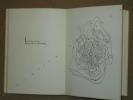
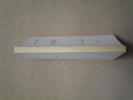



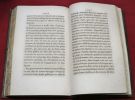
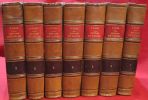
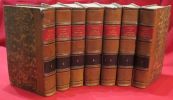
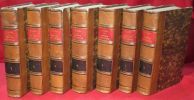




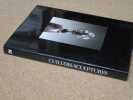
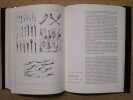





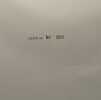




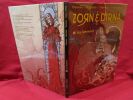






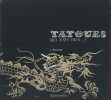
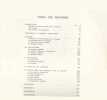
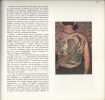
![[ Courrier de Bruno Carranza au librairie français Edouard Dentu, datée de San José de Costa-Rica, Agosto 25 de 1868 ] Courrier imprimé avec adresse ...](https://static.livre-rare-book.com/pictures/CDL/44283_thumb.jpg)
![Bruno et son bûcher - 17 février 2000 - Vannaire (21).. [Giordano Bruno] Bruno Duval,](https://static.livre-rare-book.com/pictures/JNL/004505_thumb.jpg)
![Bruno et son bûcher - 17 février 2000 - Vannaire (21).. [Giordano Bruno] Bruno Duval,](https://static.livre-rare-book.com/pictures/JNL/004505_2_thumb.jpg)

